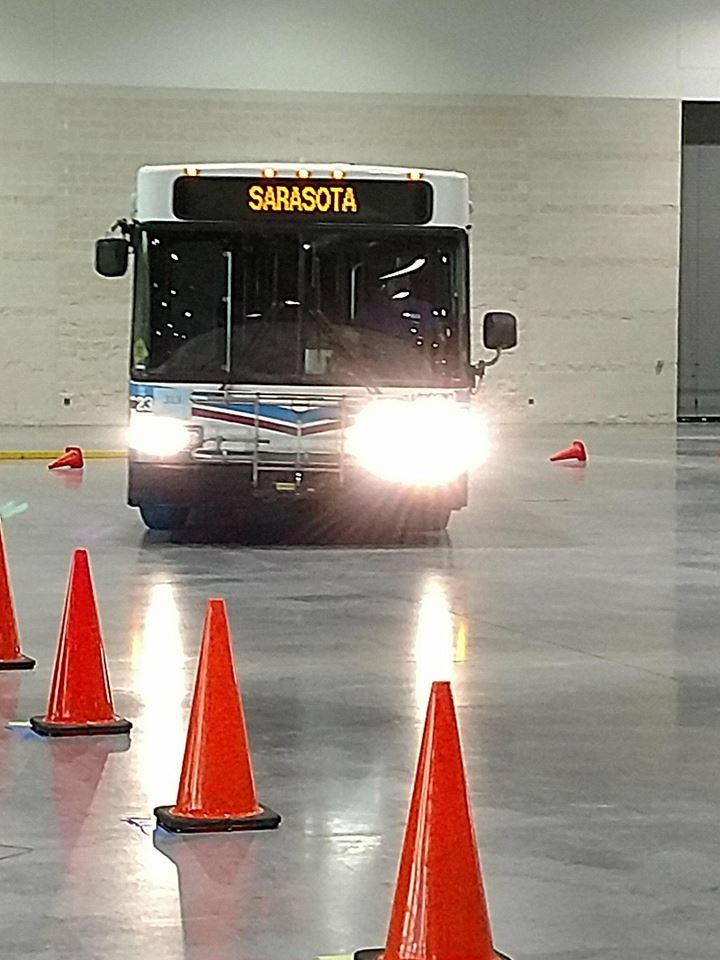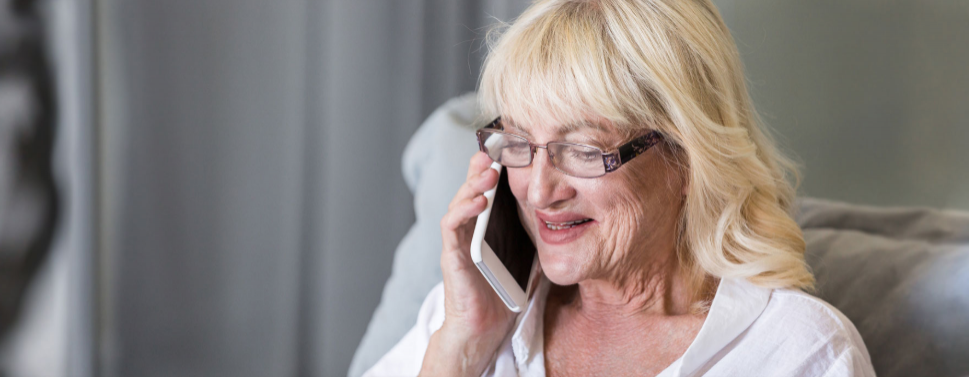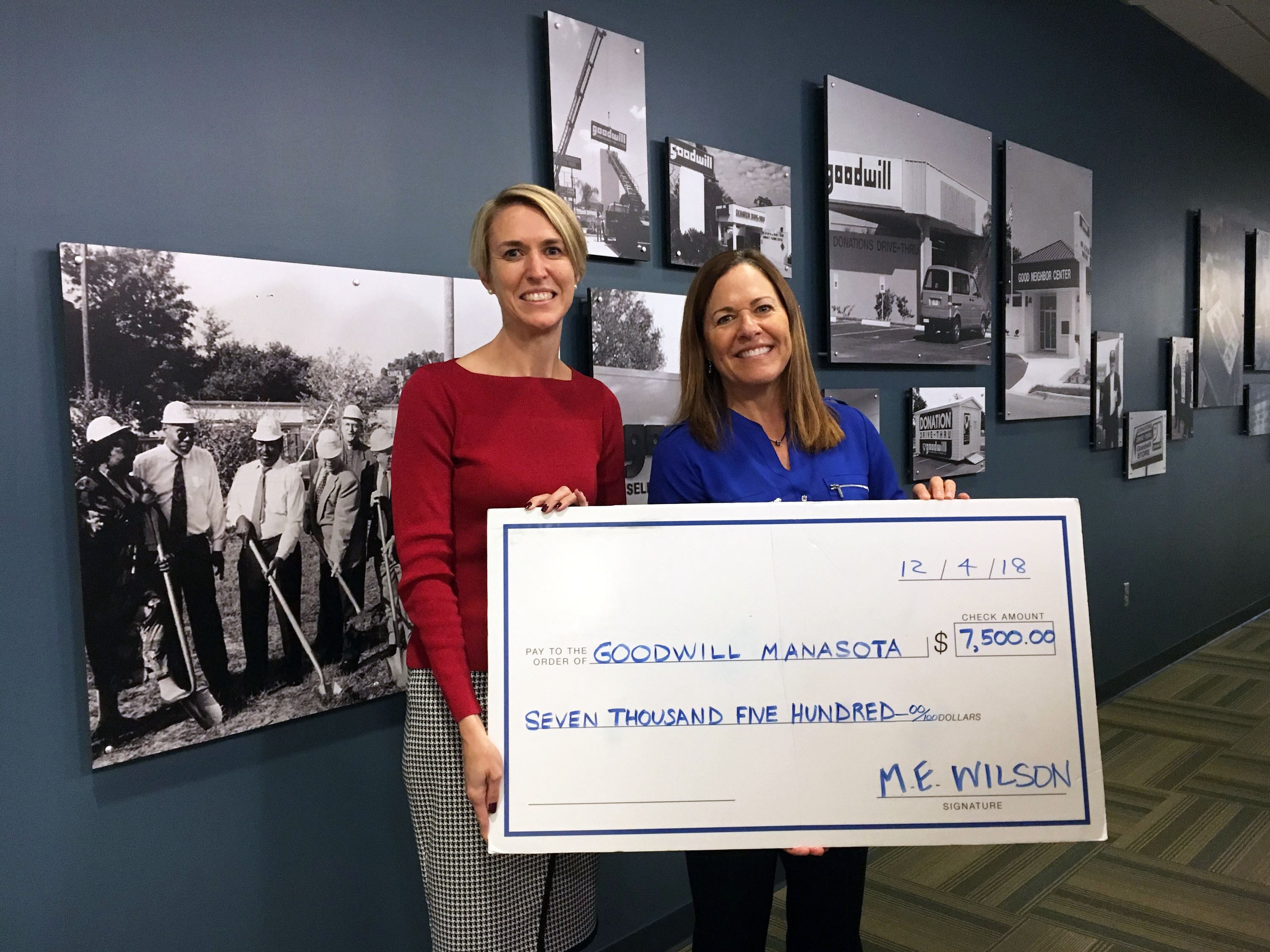SRQ DAILY Jan 5, 2019

"It's a time for decluttering, sorting, self-examining, reflecting and sometimes reinventing. "



I find myself now and then in an arcade, where I immediately head to the driving games. I Iove them. This is a bit strange considering I don't care for driving in reality. So I was intrigued by the idea using our transit system (Sarasota County Area Transit) to move around whenever possible for a few weeks.
If you are not familiar with SCAT, it is a $30.1-million operation, of which about 80 percent is subsidized from the general fund, including your tax dollars. If your property value is $250,000, you pay approximately $51 a year for SCAT. For FY2018, the system reported a fixed ridership of just under 6,000 per day. If that seems low, it is. As for the significant subsidy, it would be more palatable if more people used the service, though large subsidies are the norm for transit systems.
In 2016, the county completed a Comprehensive Operational Analysis. The basic gist is the county does a great job running a not-so-great system. County officials consistently express their desire to increase ridership. That goal will be at the forefront as discussion towards potential privatization continues. Who is best equipped to increase ridership? Who can utilize innovation, technology and implement integration with ever-popular ride-sharing to provide the best product, the public sector or a private enterprise? This conversation needs to be had. Honestly.
So on day one, I checked the Google Maps App, which provides route and schedule information. As directed I headed on foot to the intersection of Siesta Drive and Osprey Avenue to pick up the #5 northbound. I waited, $1.25 in hand but it never came. Since there are several stops on Osprey, I started walking north figuring I could catch one on the way; standing still for more than 10 minutes is not in the cards for me. I made the 2.2 miles downtown on foot without seeing a bus. There was clearly a glitch with the app. I called SCAT to let someone know and it was updated (#5 was changed to #40).
My trip home was more successful, and not having to park my F-150 downtown was a real incentive (I love my truck, but wish it had bow thrusters). I actually got on a bus this time on Ringling and in minutes was let off on Siesta Drive by Westfield Mall. As I exited, I thought, well, that was easy. As I started to walk home, approaching U.S. 41, that's where the main challenge presented itself. I realized it's not about the bus ride. It's getting on and off the bus, the pedestrian environment. Our major intersections and thoroughfares are not friendly to pedestrians—at all.
The next morning, the thought of busy intersections as I stared back at my car keys provided a real disincentive. Crossing U.S. 41 was like walking in front of the starting line at Daytona. This goes for Fruitville and Bee Ridge as well. However, at least these roads have sidewalks. On U.S. 41 between Stickney Point and Sarasota Square, where few crossings exist, I found myself dashing across the road from one drainage ditch to the other, an activity I often curse others for doing while I drive. That’s why the project FDOT is doing from Stickney to Blackburn Point is a good thing for pedestrians, lighting, crosswalks, sidewalks etc.
On smaller roads like Osprey, though busy, it is a different experience. It's pleasant. Maybe one option is to get creative with alignments. Our community has a sensible road network to work with, so that seems possible.
There is essentially no problem with the service once you get on. Some routes are busy, some not. As one might expect, the busiest route is #17, which travels up and down U.S. 41.
The buses are new, clean, on time and the drivers are without exception friendly, courteous and professional. My fellow riders were pleasant enough and the buses even have wi-fi. So how do we get more people to use it, especially those who own cars? If you want a transit system to be successful, you cannot rely solely on those for whom the bus is their only option. There is real potential, provided transit-friendly infrastructure is part of the plan. More riders means new routes and more frequency on existing routes. That will benefit everyone.
For now, open Google Maps, tap the transit icon and give it a chance. It may work for you.
Paul Caragiulo is a former Sarasota County Commissioner and Sarasota City Commissioner.


In the first days of a new calendar year, it seems that we are surrounded by ambitious activities to keep newly minted resolutions.
Research on the topic shows of the 60 percent of us who admit to making New Year’s resolutions, top vows include doing more or less of certain behaviors with the end goal to improve ourselves, our families, our communities.
Do these promises sound familiar?
· Exercise more. Eat less.
· Save more. Spend less.
· Cook at home more. Eat out less.
· Read more. Watch less TV.
· Relax more. Worry less.
· Live a more balanced life. More family time, less time away from home.
· Affirm more. Judge less.
A new calendar filled with 365 blank sheets just waiting for our distinctive imprint has an undeniable allure. All of that promise, potential and opportunity: What will we do with it? What will we look back on when we flip the page to December 31?
The impetus to change things up at the start of a new year affects businesses, too. On the cusp of a new year, we often are more amenable to retiring old practices that no longer work in order to make room for different undertakings that offer more potential.
It’s a time for decluttering, sorting, self-examining, reflecting and sometimes reinventing.
Every year brings its own challenges to keep up with changes in our personal and professional lives. This is a priority for education advocates because our children’s future world will be vastly different from our time in 2019.
Here at the Education Foundation of Sarasota County, self-assessment, evaluation and measurement are year-round standard operating procedures. As an organization whose mission includes “inspire innovation in education,” it’s incumbent on us to lead by example.
An innovation isn’t limited to an item, invention or a “thing.” It can be a novel way of thinking or a different application of an effective technique.
Witness the 2019 Ignite Education Innovator Award recipient, Dr. Todd Brown, who infuses his middle-school civics classes with experiential immersive scenarios that make different times, people and places come alive and relevant to students. The students thus are empowered and inspired to make their own marks and enact positive changes that impact their generation.
Or consider the STEMSmart Summit, sponsored by the Education Foundation in partnership with the district. This event, coming up later in January, is an innovation showcase for students to learn from one another.
Week-long immersive scenario projects that the Education Foundation provides at selected partner schools are more terrific examples of innovative teaching.
Other demonstrations of applying innovative design thinking principles include the College, Career and Life Readiness Initiative with its challenge to rethink how we as a community prepare students to thrive after high school; and our transition to the role of organizational backbone of the Local College Access Network (LCAN).
And what about our New Year’s resolution?
In 2019, we will do more to enhance the potential of students, promote excellence in teaching, and inspire innovation in education, guided by strategic philanthropy.
We hope you’ll join us.
Jennifer Vigne is president of the Education Foundation of Sarasota County. 


Come January, it seems everyone is a futurist. Predictions and prognostications fill headlines, begging for clicks, retweets and “shares.”
As a former private sector business leader, I understand the desire to seek information that can help anticipate and identify opportunities. Review of market trends, historical customer buying patterns and other reliable data guideposts always informed decisions we made during my tenure with Hallmark Cards, J.C. Penney and banking before that. That background is still incredibly important in our work at the Community Foundation of Sarasota County. Careful management of the funds entrusted to our foundation calls for expertise in asset management and charitable investment strategies. We are here to help create the community we all want to live in, and that requires creativity, which is notoriously difficult to measure.
Our foundation does use metrics to track outcomes. These measurements aid in demonstrating improvements in student reading levels, adult education progress and overall social and economic equity advances made through the causes and programs supported by our donors. Establishing thoughtful systems to better define the indicators of success in all our work is constantly developing. With our work taking place in the always “gray” area of human beings, though, we have to rely on more nuanced measures and qualitative results. That is when looking back at what got us to where we are can be most helpful.
One of the stalwart theories on human behavior change is Maslow’s hierarchy of needs, first proposed more than 75 years ago. Generally speaking, this model breaks our human needs into five categories: physiological (food, water, shelter); safety (economic, health); belonging and love (friendship, community and religious groups); esteem (mastering skills, personal independence); and self-actualization (living by a set of values, pursuing goals and altruistic tendencies).
Originally, Maslow proposed each step needed to be completed before advancing to the next level in human development. Today, it is recognized that growth between the categories is continuous and always evolving. We are all a work in progress. I see these loops of evolution daily through the causes our foundation and our donors are connected with at each level Maslow identified: homelessness, disease research, developing personal connections, building social capital, cultural pursuits and those who give back to help others are just a few examples.
So how do I see measurements of success unfolding for the year ahead when looking at things through the creative lens of humanity’s evolution? The answer comes down to a single number: One.
Success measurements are personal. Our community foundation is only as successful as each individual life of those who we work with. That is because each of us—both donor and receiver—are part of our cause of creating community. We all have the ability to be the one to make a change. We are the givers, doers, collaborators and planners who are designing the spaces where we want to live day in and day out. There are infinite opportunities ahead of us. That is always true. This is why I encourage all of us to make each day in 2019 one we are proud of what we each did to make our community better and stronger! Let’s check back in on December 31, 2019 and see how we did.
Roxie Jerde is president and CEO of the Community Foundation of Sarasota County. 


In partnership with Aviva and The Jewish Federation, JFCS kicked off its new Project of Unity program on the first day of Hanukkah, bringing together families and children of all faiths to promote unity in the community. Clients from JFCS’s Healthy Families/Healthy Children program joined Aviva residents to learn about Hanukkah and the principles of giving back and supporting those in need, which are an integral part of the Jewish faith. Participants were introduced to stories, music and traditions surrounding the Jewish faith and Hanukkah. Children also created
special holiday cards, which they then gave to Aviva residents, and shared a special meal of Latkes and other traditional Jewish foods.
“The inspiration for the Project of Unity is the belief that differences enrich our interactions and make us stronger,” said Heidi Brown, JFCS President/CEO. “We are excited to join together as one harmonious community and dedicate the Project of Unity to Steve Seidensticker. His passion for doing good endures through his beautiful legacy and the Project of Unity is a testament to his vision.” 

More Southwest Florida seniors are in need of assistance than ever, based on the number of calls received last year by the Area Agency on Aging for Southwest Florida’s Elder Helpline. The Elder Helpline received 73,843 calls in 2018, an increase of 16.2% over the previous year, and the most the agency has ever received in a single year. The Helpline is an information and referral service provided by the Area Agency on Aging for Southwest Florida (AAASWFL). The Agency’s Helpline assists older adults, caregivers, and people with disabilities in Charlotte, Collier, DeSoto, Glades, Hendry, Lee, and Sarasota Counties. It is part of the national Eldercare Locator network and is funded through the federal Older Americans Act.
“Our Helpline specialists assist people trying to find services for themselves or their loved ones,” explains Carmen Torres-Ortiz, AAASWFL’s director of client services. “There are many resources available for older people and adults with disabilities. The Elder Helpline is the first step in finding them the help they need, either through a government program, a local nonprofit, or even private pay services.
Locally, the Helpline can be accessed by calling (866) 413-5337 (41-ELDER) between 8:00 a.m. and 5:00 p.m. weekdays, excluding state holidays. Assistance is available in more than 200 languages. 

Goodwill Manasota recently received a contribution of $7,500 from M.E. Wilson to support its Veterans Services Program, which provides full case management and vocational services that address barriers to employment, disabilities, mental health issues, housing, education and job skills training. The program, which was created in 2013, was created to help eliminate barriers to employment, provide opportunities for higher-paying positions for veterans and their families, and connect veterans with needed social services and the benefits to which they are entitled. The program is staffed by veterans, ensuring those who seek help are receiving it from those who understand the challenges they face. For more information about Goodwill’s veterans program, go to experiencegoodwill.org or call (941) 355-2721, ext. 451. 

Every Child, Inc. is so proud to be the recipient of a $15,000. grant from the Norman C. Skalicky Foundation Fund of Stearns Bank. As an all-volunteer group, Every Child, Inc. is only able to do what they do with the support of people who care.
Every Child, Inc. was formed almost 20 years ago with the mission of helping make sure every child has all they need to grow into healthy, happy adults. With the help of many angels, Every Child, Inc. has given out thousands of backpacks filled with school supplies, thousands of holiday gifts, provided groceries for hundreds of families, distributed thousands of books, sponsored the Cinderella and Her Prince Project, the Cinderella Project Runway and worked on countless other projects with many other local agencies, such as the “Welcome Baby”project, which provided New Moms with a bag filled with baby essentials for their newborns. 

SRQ DAILY is produced by SRQ | The Magazine. Note: The views and opinions expressed in the Saturday Perspectives Edition and in the Letters department of SRQ DAILY are those of the author(s) and do not imply endorsement by SRQ Media. Senior Editor Jacob Ogles edits the Saturday Perspective Edition, Letters and Guest Contributor columns.In the CocoTele department, SRQ DAILY is providing excerpts from news releases as a public service. Reference to any specific product or entity does not constitute an endorsement or recommendation by SRQ DAILY. The views expressed by individuals are their own and their appearance in this section does not imply an endorsement of them or any entity they represent. For rates on SRQ DAILY banner advertising and sponsored content opportunities, please contact Ashley Ryan Cannon at 941-365-7702 x211 or via email |
Powered by Sarasota Web Design | Unsubscribe














